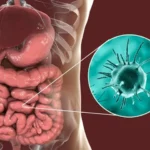Hexahydrate is a special type of chemical that contains six water molecules attached to it. Think of it like a main chemical holding hands with six water molecules. These water molecules aren’t just mixed in – they’re part of the chemical’s structure. Many important chemicals exist as hexahydrate forms because the water helps make them more stable and easier to work with.
Why Does Hexahydrate Matter?
Hexahydrate chemicals are all around us in everyday life:
In medicines that help us feel better
In plant foods that help crops grow
In cleaning products we use at home
In science labs where discoveries are made
The water in hexahydrate isn’t there by accident – it actually changes how the chemical behaves, often making it more useful than the version without water.
Common Hexahydrate Examples
Here are some well-known hexahydrate chemicals you might have heard of:
1. Magnesium Chloride Hexahydrate
Used to melt ice on roads
Helps make tofu firm
Found in some bath salts
2. Nickel(II) Chloride Hexahydrate
Used in metal plating
Helps make rechargeable batteries
Used in some chemical tests
3. Cobalt(II) Chloride Hexahydrate
Changes color when wet (used in humidity indicators)
Helps make pigments for paints
Used in science experiments
Special Features of Hexahydrate Chemicals
Hexahydrate forms have unique qualities:
They Look Different
Often form pretty crystals
May have bright colors (pinks, blues, greens)
Look different from their “no-water” versions
They Act Differently
Usually dissolve easier in water
More stable on the shelf
Often safer to handle
Melt at lower temperatures
They’re More Useful
Better for medicines (easier for bodies to absorb)
More effective in plant foods
Work better in many chemical processes
Where We Use Hexahydrate Chemicals
In Medicine
Some hexahydrate forms of medicines work faster
Easier to make into pills or liquids
More stable so they last longer
In Farming
Plants can use the nutrients better
Dissolves easily in water for spraying
Less likely to clump up
In Science Labs
Gives more consistent results
Easier to measure accurately
Works better in experiments
At Home
In some bath products
In certain cleaning solutions
In hobby materials like dyes
How Hexahydrate Forms
There are two main ways chemicals become hexahydrate:
From Water Solutions
When chemicals dissolve in water and then dry slowly
The water gets trapped in the crystal structure
By Absorbing Water
Some dry chemicals naturally grab water from the air
After getting six water molecules, they stop
Storing Hexahydrate Chemicals
Because hexahydrate forms contain water, they need special care:
Keep Them Dry (But Not Too Dry)
Too much moisture: Might get extra water
Too dry: Might lose their water
Best in sealed containers
Watch the Temperature
Heat can drive off the water
Very cold can change the structure
Room temperature is usually best
Hexahydrate vs. Other Hydrate Forms
Not all water-containing chemicals are hexahydrate. Here’s how they compare:
| Type | Water Molecules | Common Uses |
|---|---|---|
| Monohydrate | 1 | Some medicines |
| Trihydrate | 3 | Certain cleaners |
| Hexahydrate | 6 | Most versatile |
| Decahydrate | 10 | Washing powders |
Hexahydrate hits a sweet spot – enough water to be useful but not so much that it’s hard to handle.
Fun Facts About Hexahydrate
Some hexahydrate crystals are beautiful enough for jewelry
The water in hexahydrate isn’t wet – it’s part of the crystal
Ancient Egyptians used hexahydrate forms in early chemistry
Many hexahydrate chemicals change color if they lose their water
Why Hexahydrate Matters for the Future
Scientists are finding new uses for hexahydrate forms every day:
Better Medicines
Making drugs that work faster
Creating more stable vaccines
Developing new treatments
Greener Technology
Improving rechargeable batteries
Making safer fertilizers
Developing eco-friendly materials
Space Exploration
Possible water sources on other planets
Materials for space stations
Tools for Mars missions
Everyday Products with Hexahydrate
You might be using hexahydrate chemicals without knowing it:
The road salt in winter
The plant food in your garden
The medicine in your cabinet
The bath salts in your bathroom
Simple Science Experiment
You can see hexahydrate in action at home:
What you need:
Epsom salt (magnesium sulfate hexahydrate)
Warm water
A clear glass
A spoon
What to do:
Dissolve Epsom salt in warm water until no more will dissolve
Leave it overnight
In the morning, you’ll see hexahydrate crystals formed!
Safety with Hexahydrate
While many hexahydrate forms are safe:
Always read labels
Don’t taste test chemicals
Keep away from children
Wash hands after handling
Conclusion: The Watery Wonder
Hexahydrate might sound complicated, but it’s really just chemicals with six water molecules that make them work better. From helping plants grow to making medicines effective, these special forms play a big role in our lives. Next time you see pretty blue or pink crystals in a science lab or use Epsom salts in your bath, remember – you’re seeing hexahydrate in action!















Leave a comment